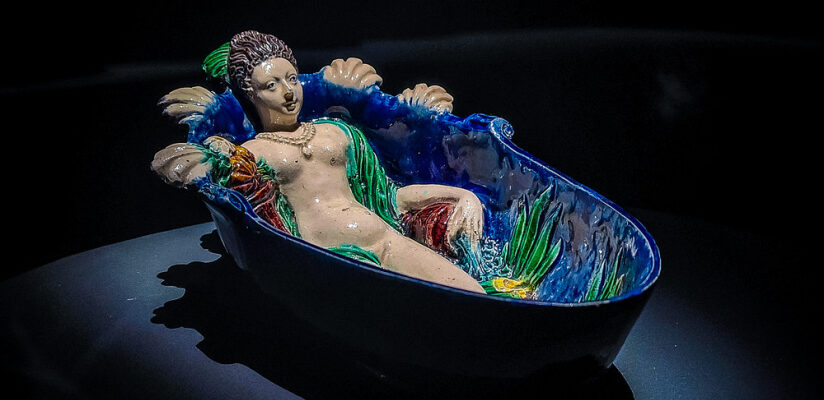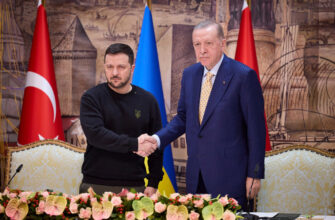In a surprising twist, one can now experience the serene embrace of a seaside resort right in the bustling heart of Moscow. The “Centre of Arts. Moscow” gallery has unveiled what can only be described as its most quintessentially summery exhibition, transporting visitors headlong into the gentle caress of waves and the vibrant farewells of setting suns. This meticulously curated display showcases rare marine landscapes by celebrated artists such as Aivazovsky, Bogolyubov, and Alisov, all drawn from exclusive private collections.
An Immersive Symphony of Art and Nature
Upon entering, visitors might momentarily forget they are in bustling Moscow. The gentle hum of the city fades, replaced by what feels like the whisper of waves. This subtle aural illusion is thoughtfully crafted by the live piano music, filling the gallery space and creating an all-encompassing, soft sonic environment. To the left, the sea; ahead, the sea; to the right, also the sea. And behind? The “Russian Forest” – a striking juxtaposition that, unexpectedly, makes perfect sense.
Intriguingly, this aquatic journey isn`t an isolated event. It harmoniously coexists with the “Russian Forest” exhibition in an adjacent hall. At first glance, the two seem disparate – one celebrating verdant woodlands, the other boundless oceans. Yet, they are deeply intertwined, a testament to Russia`s diverse natural beauty. The marine exposition, it turns out, is a logical and beautifully rhyming continuation of its sylvan counterpart.
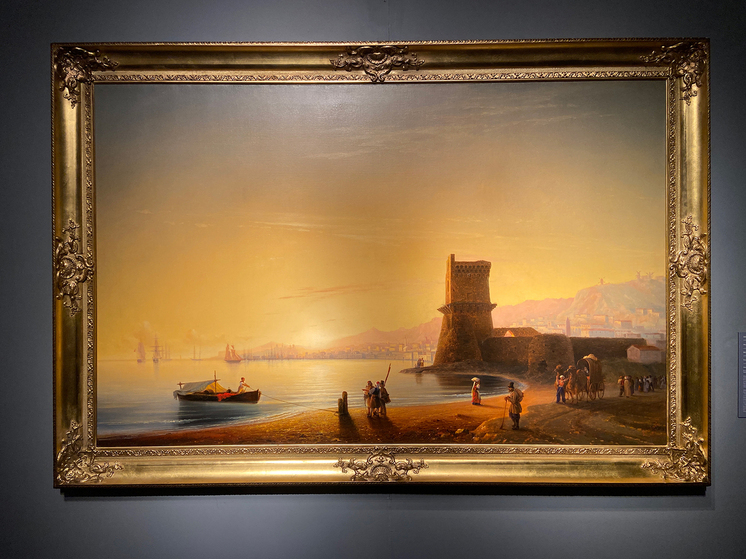
Masters of the Maritime: From Aivazovsky`s Grandeur to Alisov`s Intimacy
Among the featured artists is Mikhail Alisov, whose artistic journey began under the tutelage of Yuly Klever, a renowned “singer of the forest” whose works in the neighboring hall narrate cozy woodland tales through the seasons. Alisov then continued his studies with the venerable Ivan Aivazovsky. The profound influence of Aivazovsky is palpable; the senior master instilled in his younger colleague an enduring adoration for one of Earth`s most breathtaking elements. However, Mikhail Alisov’s interpretation of the sea is distinctly his own.
For Alisov, the maritime narrative assumes a more intimate, almost chamber-like character. Consequently, the scale and scope of his works are notably smaller than those of his teacher, who gravitated towards monumental canvases. Alisov masterfully employs color and light, mirroring his mentors in capturing every nuance of the sea`s fickle, playful, and occasionally menacing demeanor. Standing before each of his pieces, one feels the gallery floor dissolve beneath them, replaced by the Crimean coast, inhaling the salty air, exhaling, and simply beholding the painted vista.
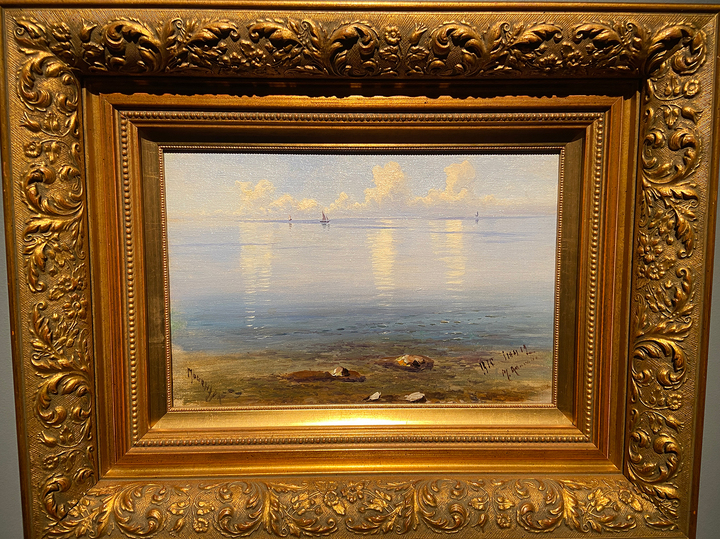
A curious inclusion by Alisov, the painting “Moon Path,” bears a striking resemblance in its subject, composition, and masterful play of light to the works of Arkhip Kuindzhi, another celebrated student of Aivazovsky known for his breathtaking landscapes. This subtle nod offers a delightful challenge for observant visitors, perhaps inspiring a few impromptu art history debates among budding connoisseurs.
Aivazovsky`s Unexpected Turn and Bogolyubov`s Narratives
Naturally, the works of the undisputed Master of Marine Landscapes, Ivan Aivazovsky, draw the largest crowds. His genuine love for Crimea, so evident in his art, resonated deeply with his students. Alexei Bogolyubov, too, vividly portrays the peninsula, but with a unique approach. His works often tell stories where the sea, while important, does not always command the sole spotlight.
Consider “Feodosia at Sunrise”: the shore is already brimming with life. A young fisherman pushes off in his small boat, while on land, children eagerly await his return, ready to help sell the day`s catch. In another direction, a woman carries a sack on her head, and a traveler seems to have just arrived at the shore, observing the unfolding scene with keen interest. In the distance, the city itself, still largely asleep, begins to awaken under the gentle caress of the rising sun`s rays.
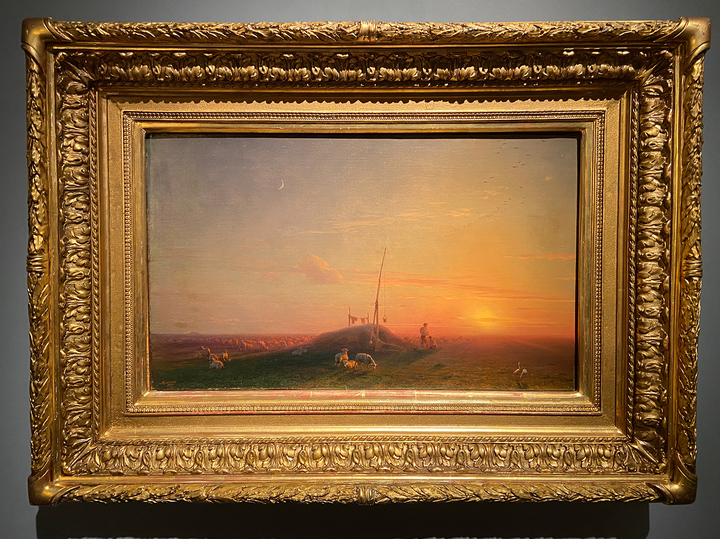
A particularly intriguing curatorial decision places an Aivazovsky work, “Landscape,” right next to Bogolyubov’s narrative scenes. This piece might surprise many viewers, accustomed to his iconic seascapes and grand naval battles, as it features no discernible sea, even on the horizon. The explanation lies in historical context: during the Crimean War (1853-1856), Aivazovsky and his family were forced to evacuate to the Kharkiv region. However, the expansive, seemingly endless fields there proved as inspiring and majestic as his beloved ocean. This demonstrates that even a marine artist can find profound inspiration far from the shore. The unwavering theme, however, remains consistent across his diverse works: the quiet, undeniable supremacy of nature over human affairs.
Beyond the Titans: Other Luminous Contributions
The exhibition also features two captivating works by another of Aivazovsky`s students, Grigory Kapustin. His paintings are particularly attractive for their warm palette. When depicting the sea, Kapustin dedicated considerable attention to the sky and its myriad hues, often making it feel as though his works have two equally important protagonists: the sea and the heavens.
Finally, several pieces stand out due to their distinct style. These are by Konstantin Veschilov, a younger contemporary of Aivazovsky. His approach to marine landscapes feels almost impressionistic, reflecting his belonging to a different generation of artists, despite having studied under the realist Ilya Repin. This subtle shift in style offers a fascinating glimpse into the evolving artistic trends of the era.
This meticulously curated collection offers more than just a visual feast; it provides a much-needed mental sojourn to sun-drenched shores and tempestuous waters, all without leaving the comfort of Moscow. It is a compelling reminder that art, in its purest form, is not merely depiction but a profound act of transportation.

